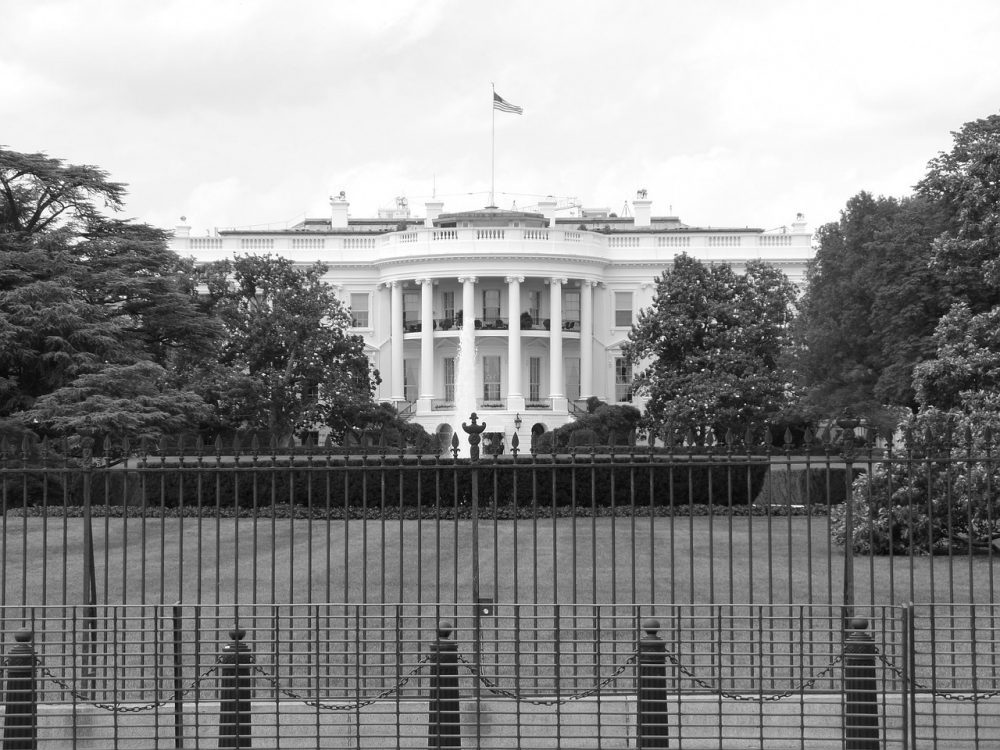“Five Things to Watch in the January Jobs Report.” This morning’s Wall Street Journal article led with:
The U.S. government releases its broad measure of the January labor market [at 8:30 AM EST] on Friday. Economists surveyed by The Wall Street Journal expect the Labor Department to report employers added 170,000 jobs during the month and the unemployment rate held at 3.9%. Here are five things to watch in the report.
- Shutdown Spillover
- Happy 100 [months of consecutive jobs growth]
- Wacky [unemployment] rate
- Revision Watch
- Pay Raise?
President Trump’s schedule (EST):
11:45 AM: Holds a meeting to discuss fighting human trafficking on the southern border;
12:30 PM: Lunch with Secretary of State Pompeo;
4:00 PM: With the First Lady, departs the White House;
6:45 PM: Arrives Palm Beach, FL on his way to Mar-a-Lago.
Sunday, President Trump will appear on CBS’s “Face the Nation.”
“Trump Gives Upbeat Assessment of Trade Talks With China.” Last night’s Wall Street Journal article led with:
WASHINGTON—The U.S. and China moved closer to settling their trade dispute, with President Trump saying he expects to meet again with Chinese President Xi Jinping to resolve the conflict that has rattled the global economy.
Mr. Trump’s upbeat assessment came as he met Thursday with Vice Premier Liu He of China in the Oval Office following two days of high-level talks between the two sides.
During the talks, the Chinese delegation proposed to the U.S. that Mr. Trump meet with Mr. Xi in the Chinese resort island of Hainan after his planned summit with the North Korean leader, Kim Jong Un, in late February, people briefed on the talks said.
At the meeting, Mr. Liu said China would buy 5 million tons of U.S. soybeans daily, a number Mr. Trump repeated, adding it would “make our farmers very happy.” The administration later clarified that China has agreed to buy an additional 5 million metric tons of soybeans—but not daily, and no time frame was specified.
The development capped a day in which Mr. Trump sent what appeared to be mixed messages on prospects for a deal by the March 1 deadline.
At one point, the president said he might be willing to accept a limited agreement by the deadline and extend the talks to get a more comprehensive deal. “I think we can do it by March 1. Can you get it down on paper by March 1? I don’t know,” Mr. Trump said, adding he was aiming for a meaningful agreement.
“This isn’t going to be a small deal with China,” Mr. Trump said. “This is either going to be a big deal or it’s going to be a deal that we’ll just postpone for a while.”
But as Mr. Trump and Mr. Liu met with reporters Thursday afternoon, the president said he didn’t anticipate the need to extend the deadline. His top China trade negotiator, U.S. Trade Representative Robert Lighthizer, later said the March 1 deadline remains intact.
See this White House statement and transcript of remarks by President Trump and Vice Premier Liu.
“Executive Order on Strengthening Buy-American Preferences for Infrastructure Projects.” Yesterday, President Trump signed this Executive Order to expand his April 18, 2017 Executive Order 13788. See this White House transcript of remarks by President Trump and others.
“HHS Proposes Overhaul of Drug Rebate System.” Last night’s CQ Roll Call article led with:
The Department of Health and Human Services on Thursday proposed ending federal protections for drug manufacturer rebates to pharmacy benefit managers and health plans in an effort to encourage upfront patient discounts and flat service fees for the companies.
The long-anticipated proposed rule has the potential to nudge up insurance premiums, a senior administration official said on a call with reporters, estimating the increases to be $3 to $5 per member per month. But savings from out-of-pocket costs would exceed those increases, he said.
“House Democrats Unveil Homeland Security Proposal, Minus Wall.” Yesterday’s CQ Roll Call article stated in its entirety:
House Democrats released an outline of their fiscal 2019 Homeland Security spending proposal, totaling $49 billion in regular discretionary funding under this year’s budget caps.
The measure contains $14.3 billion for Customs and Border Protection, a boost of $278 million, or 2 percent, over fiscal 2018. It does not contain specific funds for a wall along the U.S.-Mexico border nor money to increase the number of Border Patrol agents. It would provide $400 million for “border security technology and deployment” and $502 million for medical care and food for migrants crossing the border.
Immigration and Customs Enforcement would receive an increase of $369 million, or 5 percent, over fiscal 2018, to $7.44 billion. The proposal would limit the number of detention beds to 35,520 for the rest of the fiscal year, “with the intention that family detention be phased-out” by the end of fiscal 2019.
A Senate GOP proposal would provide nearly $55 billion for the Homeland Security Department, including nearly $5.6 billion in emergency spending for CBP and ICE to fund President Donald Trump’s wall request and other administration priorities, including funds to support 52,000 detention beds. A House-Senate conference committee on the bill (H J Res 31) has begun meeting to hash out differences with an eye on the Feb. 15 government funding deadline when the current stopgap law (PL 116-5) expires.
“Trump, in Interview, Calls Wall Talks ‘Waste of Time’ and Dismisses Investigations.” Yesterday’s New York Times article (interview excerpts) led with:
WASHINGTON — A defiant President Trump declared on Thursday that he has all but given up on negotiating with Congress over his border wall and will build it on his own even as he dismissed any suggestions of wrongdoing in the investigations that have ensnared his associates.
In an interview in the Oval Office, Mr. Trump called the talks “a waste of time” and indicated he will most likely take action on his own when they officially end in two weeks. At the same time, he expressed optimism about reaching a trade deal with China and denied being at odds with his intelligence chiefs.
“House Tax Writers Ready to Tackle Infrastructure.” Yesterday’s CQ Roll Call article led with:
The new chairman of the House Ways and Means’ tax policy subcommittee says he expects his panel’s first hearing to focus on infrastructure, which is on the short list of domestic initiatives that President Donald Trump and House Speaker Nancy Pelosi, D-Calif., agree on.
Rep. Mike Thompson, also a California Democrat, said he hasn’t set a date for the hearing but that it will feature experts and their explanations of the options for financing an infrastructure package.
“Let’s have a hearing to find out what we’re doing, what we need to do,” Thompson said. His subcommittee has been renamed the more traditional Select Revenue Measures panel, after being called the Tax Policy subcommittee in the 115th Congress.
Earlier this week, House Transportation and Infrastructure Committee Chairman Peter A. DeFazio announced a Feb. 7 hearing on what he describes as a trillion-dollar infrastructure backlog. DeFazio has said his plan to pass an infrastructure package before this summer relies on Ways and Means to find funding for new projects and plug a growing shortfall in the Highway Trust Fund.
“Grassley Wants Tax Extenders in Spending Deal.” Yesterday’s CQ Roll Call article led with:
The fate of efforts to extend a package of 26 tax breaks that expired at the end of 2017 is tied to spending talks to ensure the government keeps running after Feb. 15, Senate Finance Chairman Charles E. Grassley said Thursday.
“The only vehicle that I see in the next few weeks is what comes out of this closing-down conference,” Grassley said, referring to the bicameral negotiations on a fiscal 2019 Homeland Security Appropriations conference report (HJ Res 31). “And if we don’t have something ready to go when that’s done, have a compromise on extenders . . . then it’s going to be a long time before we get another opportunity.”
“Income Taxes on the Top 0.1 Percent Weren’t Much Higher in the 1950s.” Yesterday’s Tax Foundation analysis stated:
Lawmakers have recently announced plans that would increase the tax burden on wealthy Americans, ranging from higher marginal income tax rates to wealth taxes. These proposals are flawed in several ways, including in their lack of understanding of tax history.
While marginal income tax rates have come down from their highs of 91 and 92 percent in the 1950s, changes in the tax base—how much and what types of income are subject to the tax—mean the effective rates on the wealthy haven’t changed nearly as much.
“How CBO and JCT Analyzed Coverage Effects of New Rules for Association Health Plans and Short-Term Plans.” Yesterday’s 16-page report stated:
During the summer of 2018, the Administration issued final rules governing coverage offered through association health plans (AHPs) and short-term, limited-duration insurance. (AHPs are legal arrangements that allow associations or unrelated employers to jointly offer fringe benefits to members or employees.) The rules were designed to increase enrollment in such plans, which may be sold in the small-group and nongroup insurance markets. AHPs and short-term plans are exempt from many of the regulations that govern other insurance offerings in those markets.
This report describes how the Congressional Budget Office and the staff of the Joint Committee on Taxation (JCT) analyzed the new rules and determined how those rules would affect the agencies’ projections of the number of people who obtain health insurance and the costs of federal subsidies for that coverage. It also provides details about the projected effects.
CBO and JCT’s current findings are similar to those from an analysis of the two rules as they were proposed. Those findings were published in a report on federal subsidies for insurance coverage that CBO released with its spring 2018 baseline.
The agencies’ two main findings from the current analysis are as follows:
• Each year over the next decade, roughly 5 million more people are projected to be enrolled in AHPs or short-term plans as a result of the two rules. Almost 80 percent are people who would otherwise have purchased coverage in the small-group or nongroup markets. The remaining 20 percent (roughly 1 million people) are projected to be newly insured as a result of the rules.
• Once the two rules take full effect, premiums for coverage in the fully regulated small-group and nongroup markets are projected to be roughly 3 percent higher than they would have been without the rules. In 2028, for example, such an increase would raise average annual premiums by roughly $350 to $400 for single coverage and by $900 to $950 for family coverage. Premiums for fully regulated coverage are projected to rise because people who continue to purchase coverage in the fully regulated markets are expected to have higher average health care costs than those who purchase AHPs or short-term plans. Because federal subsidies defray some of the higher costs, CBO and JCT do not expect that premium increase to spur a noticeable decline in insurance coverage.
“WASHINGTON METROPOLITAN AREA TRANSIT AUTHORITY: Actions Needed to Strengthen Capital Planning and Track Preventive Maintenance Program.” Yesterday’s 55-page Government Accountability Office report stated:
Safety incidents in recent years on WMATA’s rail system have raised questions about its processes for performing critical maintenance and replacing capital assets. WMATA initiated a new preventive maintenance program for its rail track in 2017, and is currently implementing a new capital planning process.
Pete Davis is an economist who worked on the tax and budget committees of Congress for 11 years and who follows Washington for money managers.







